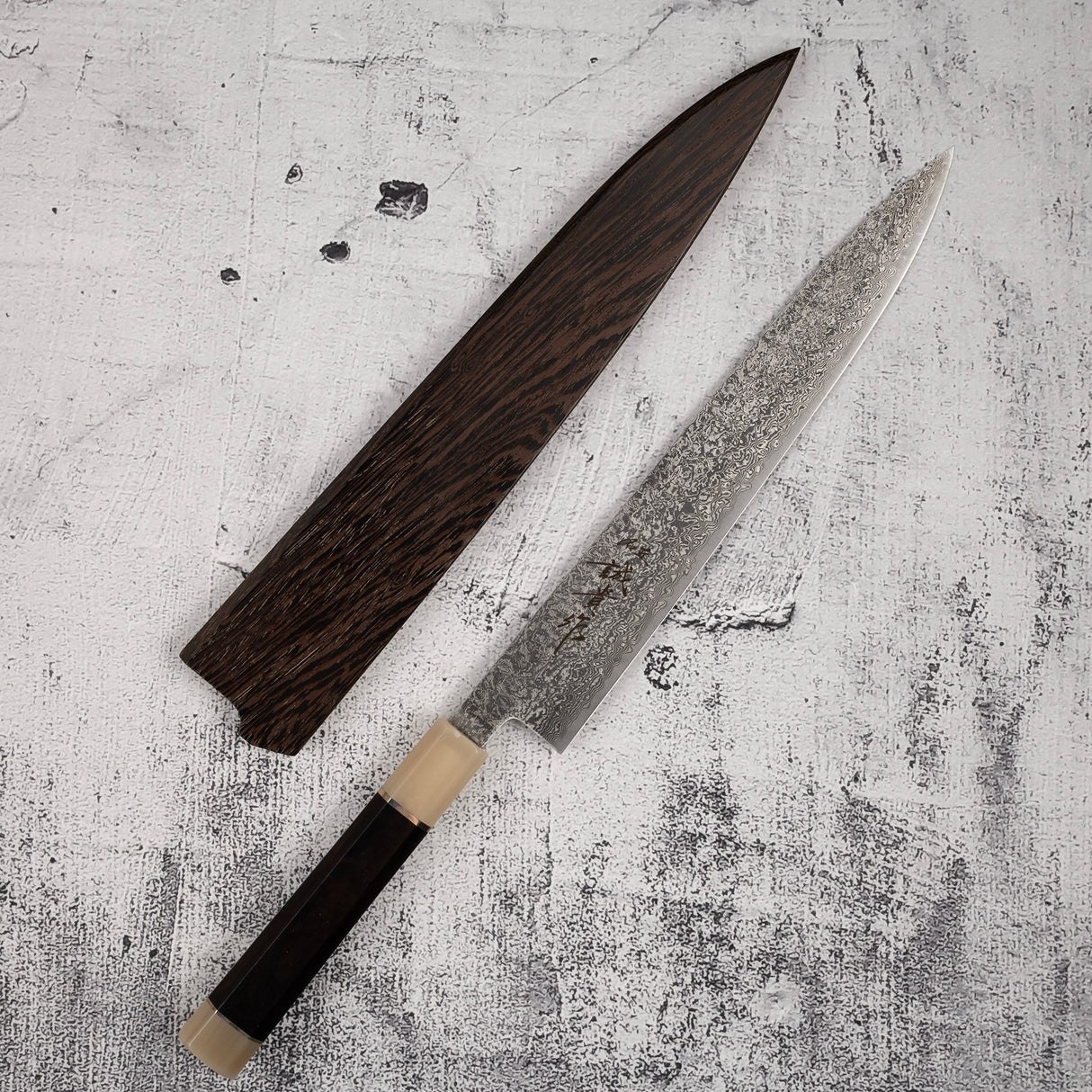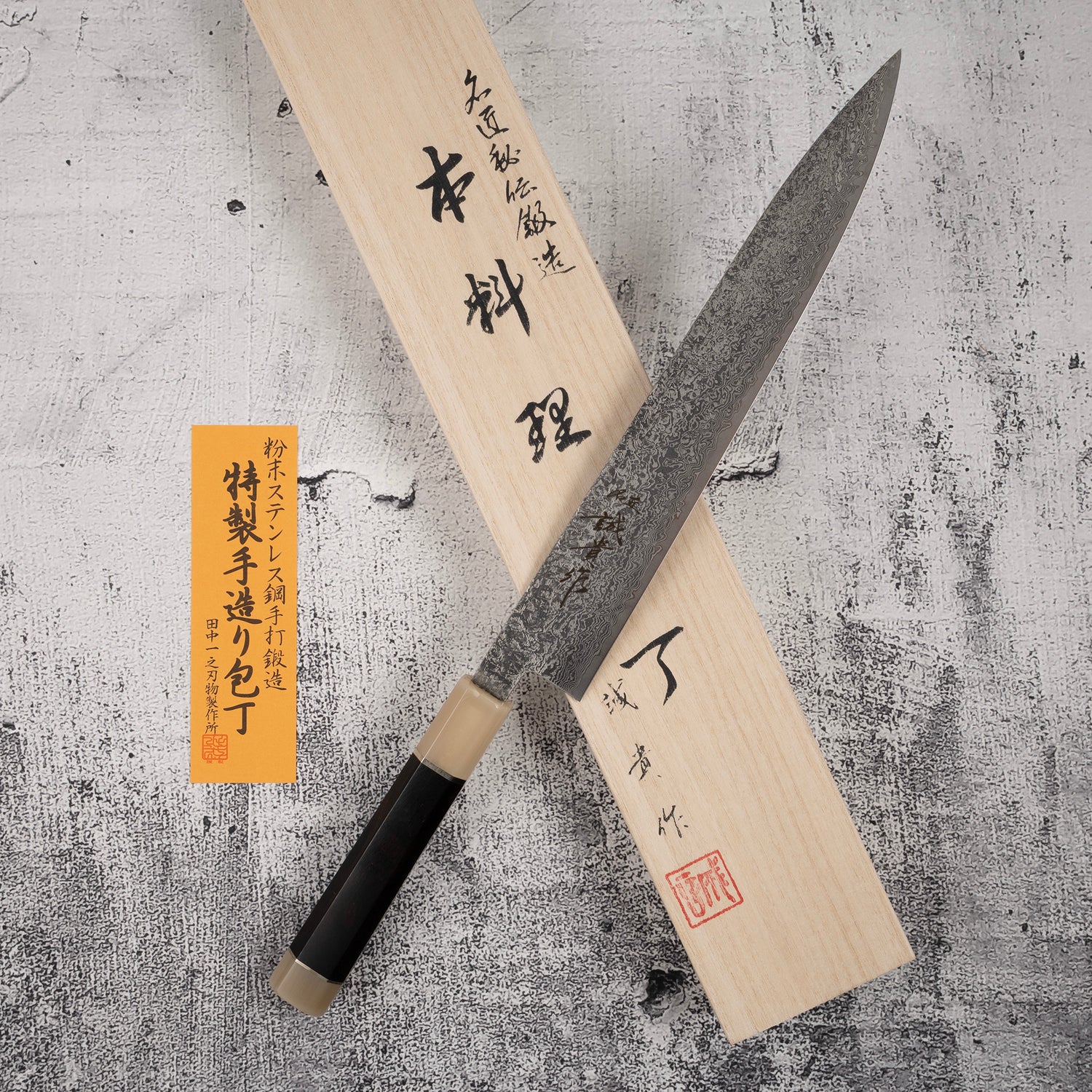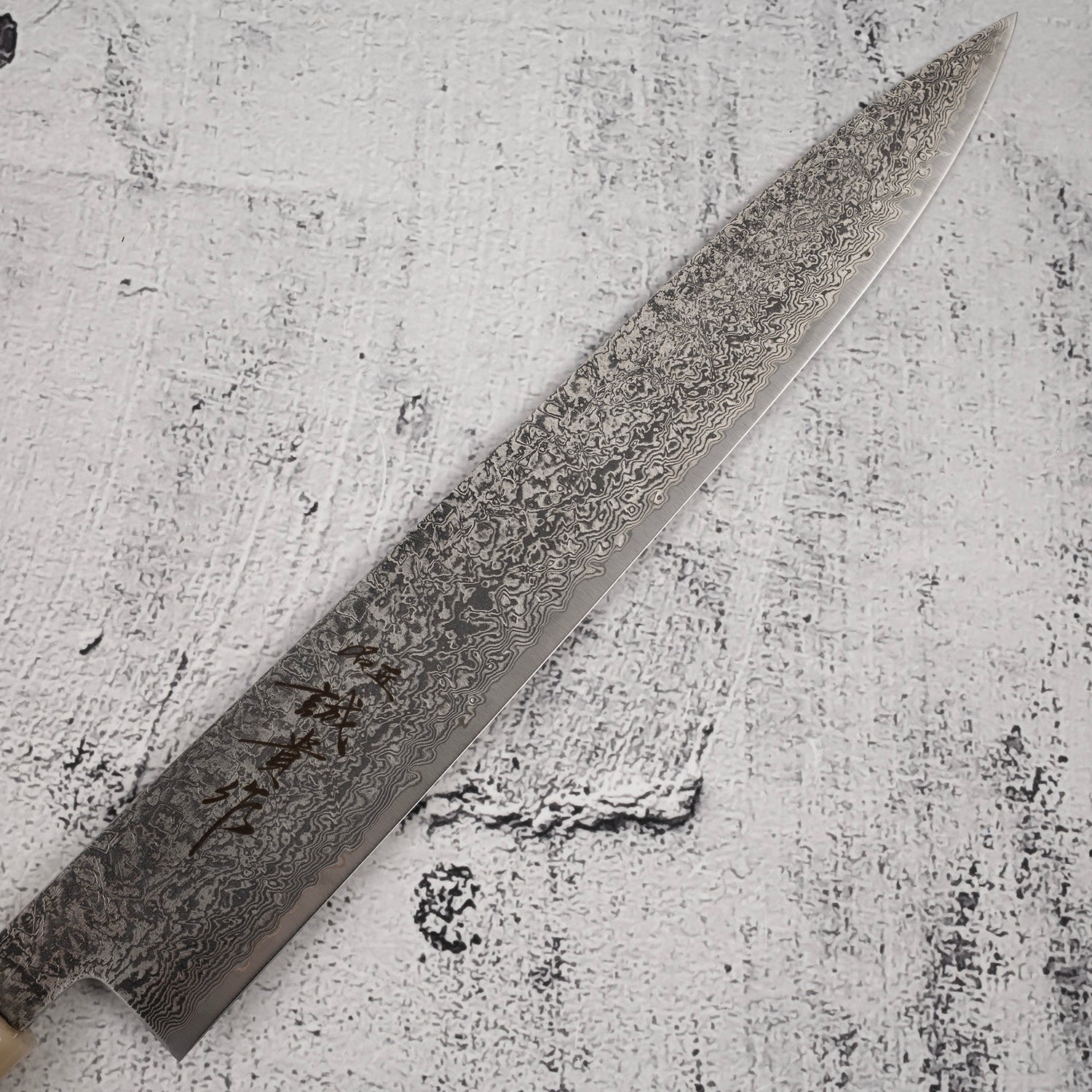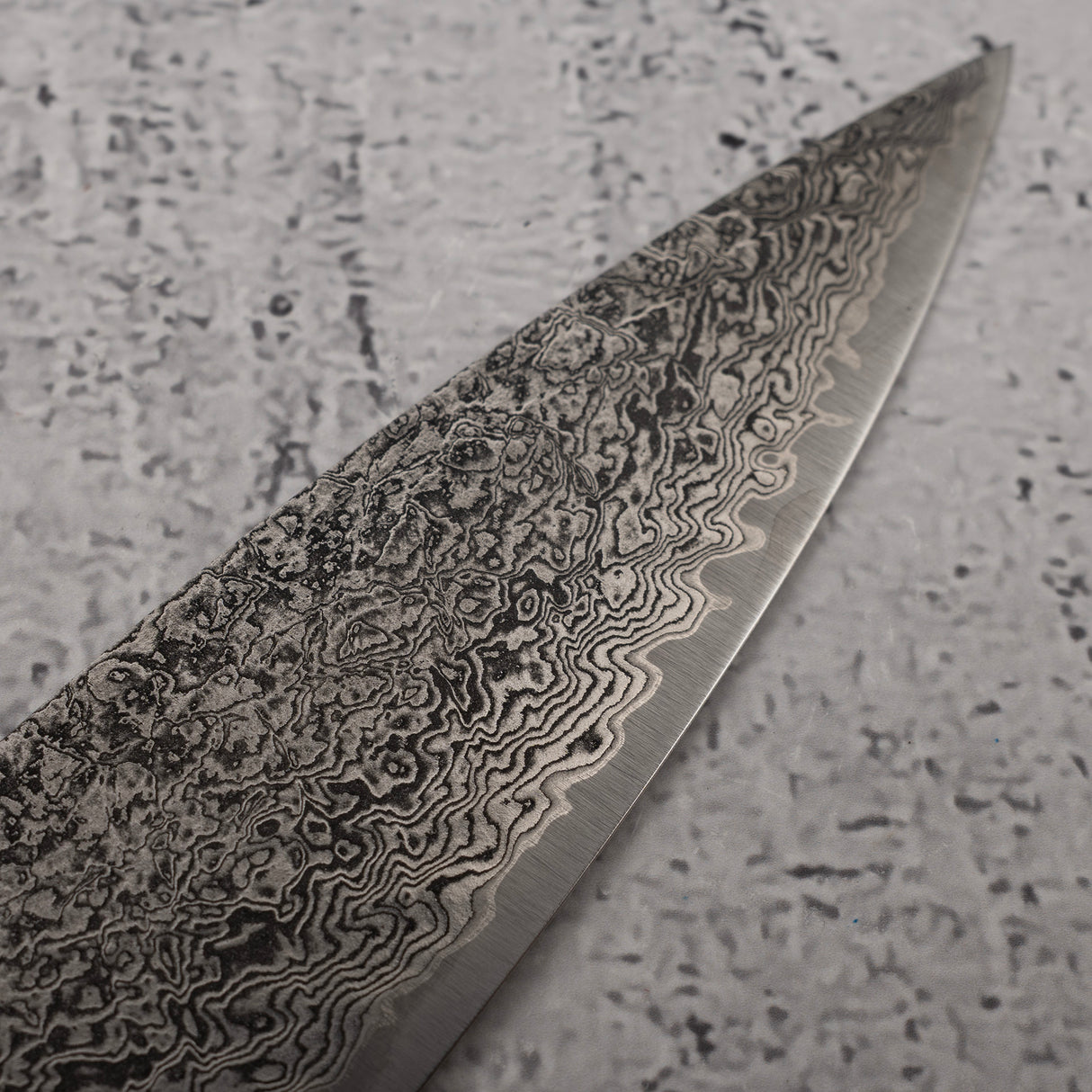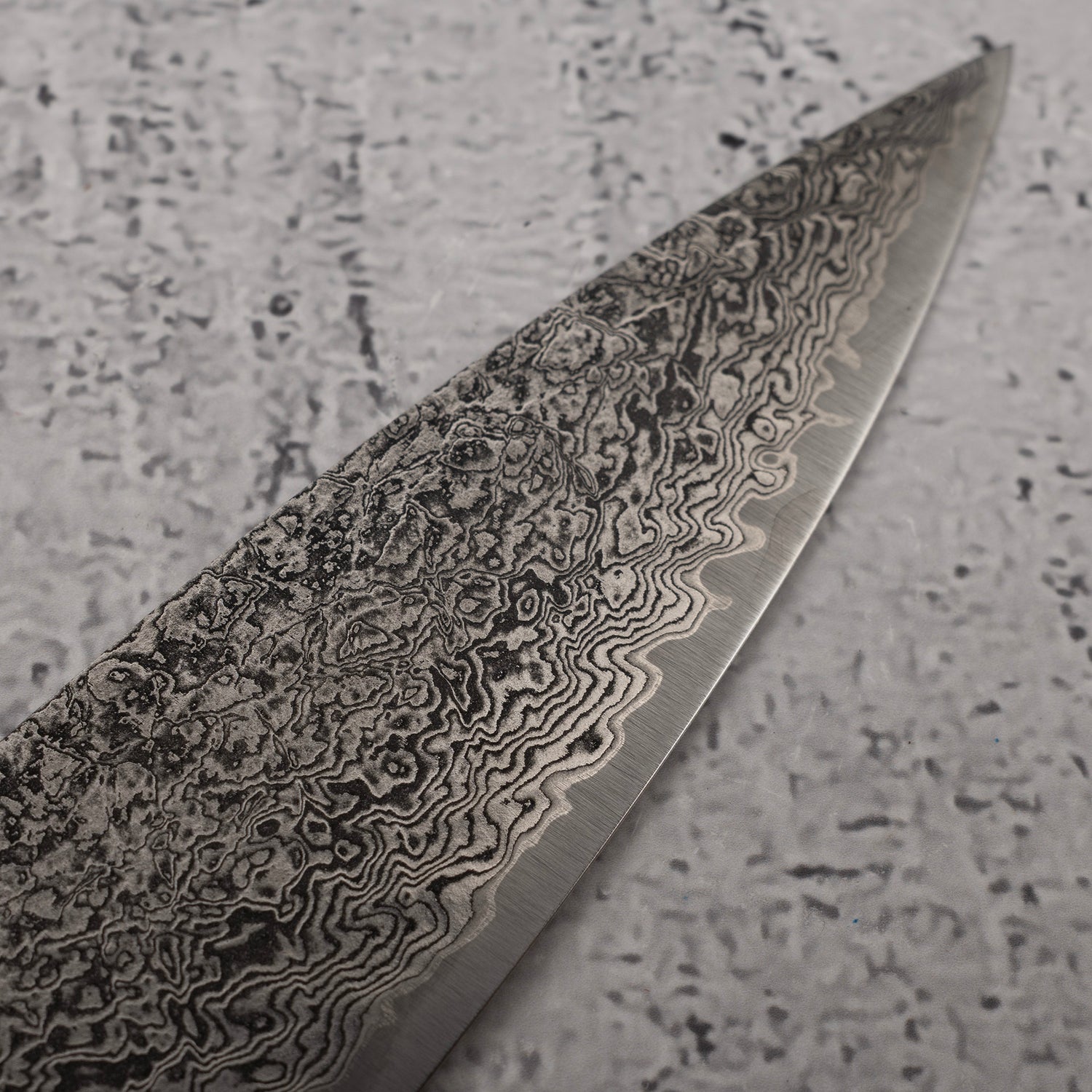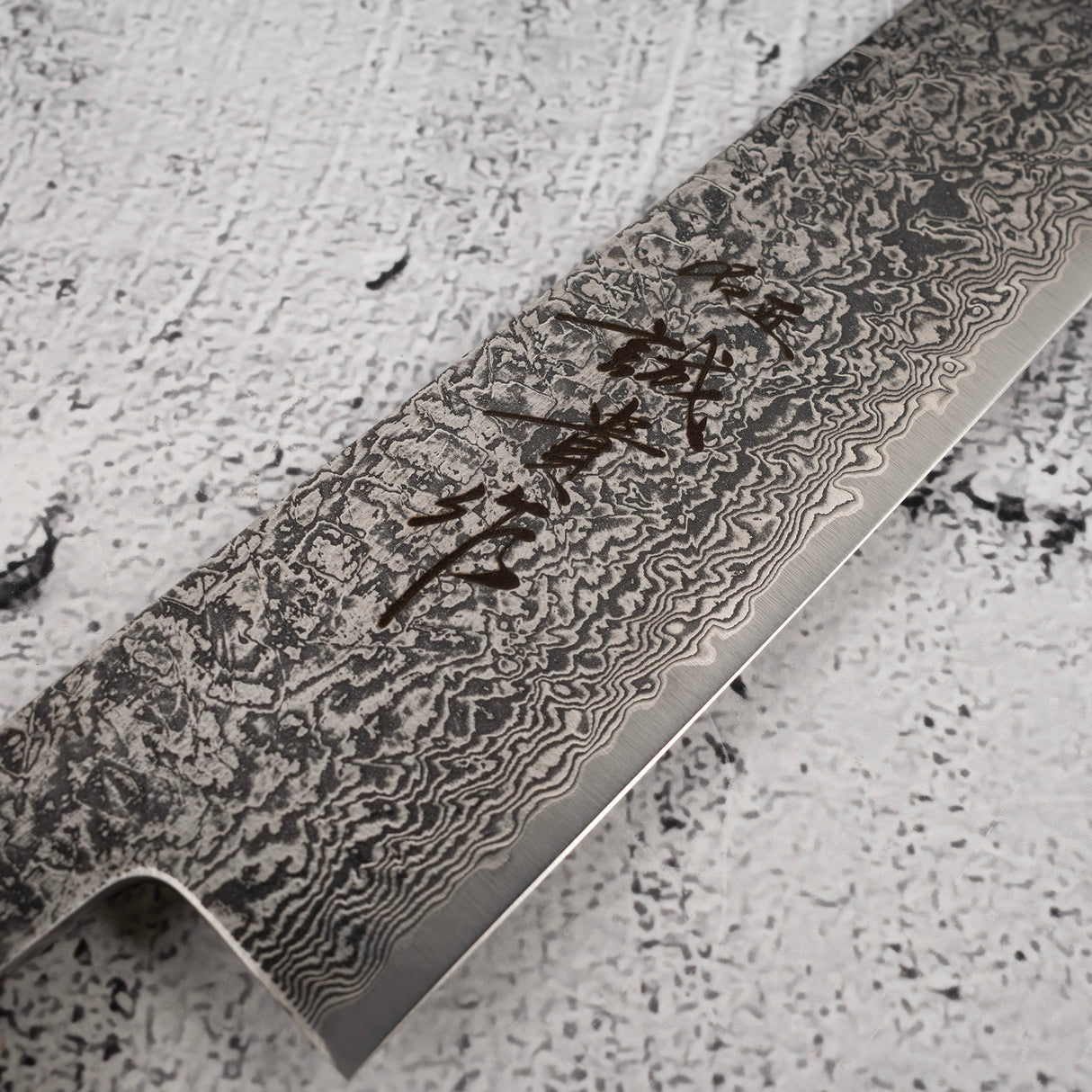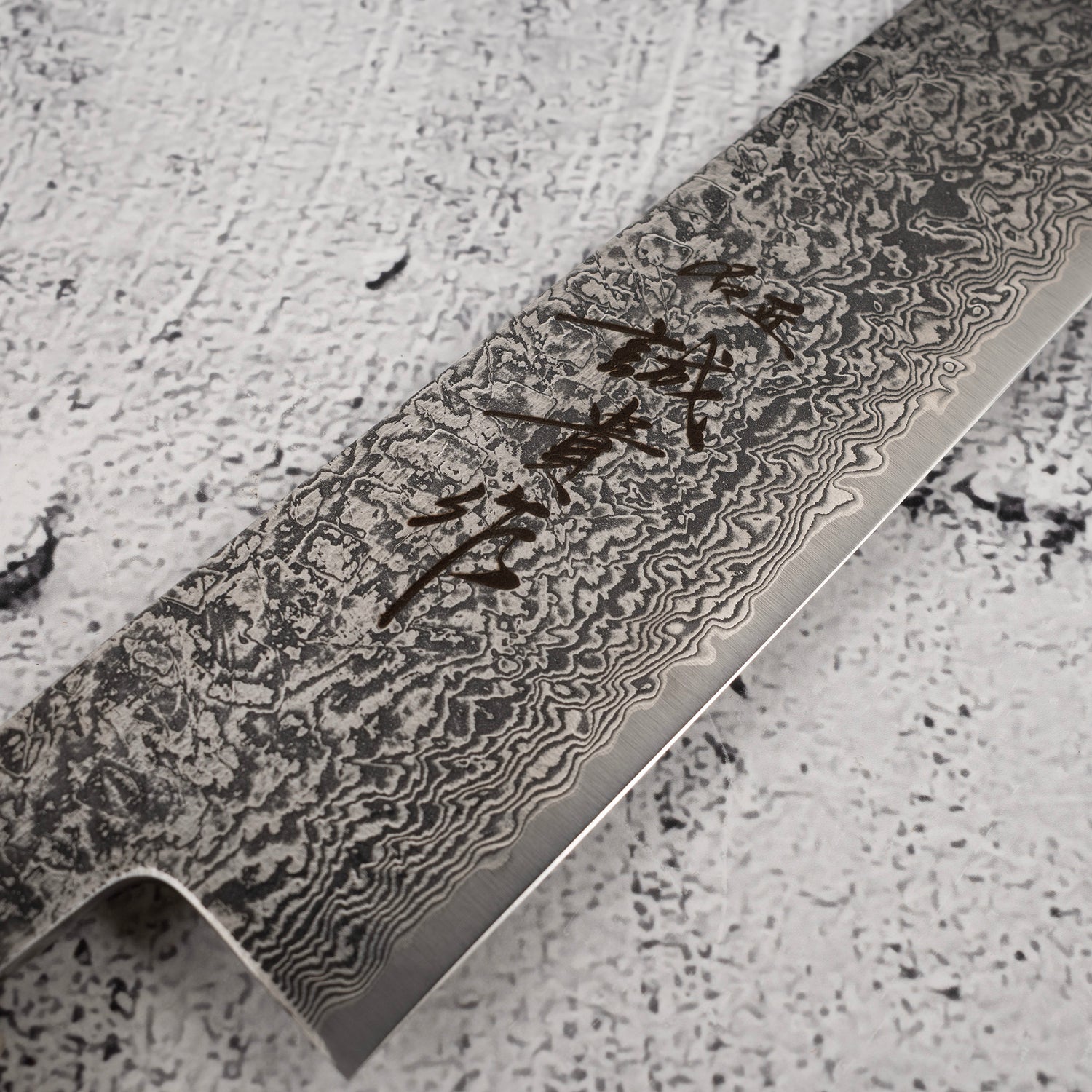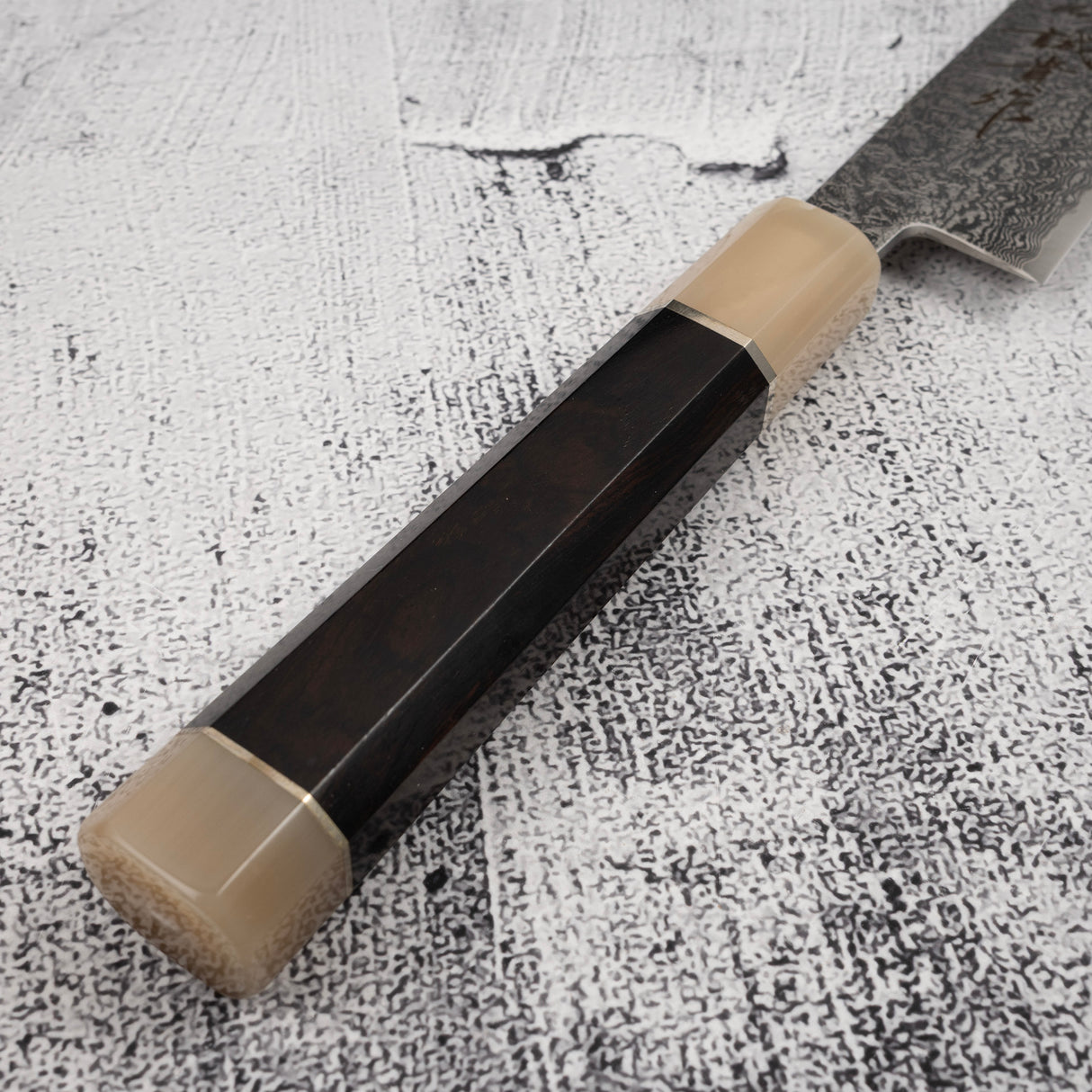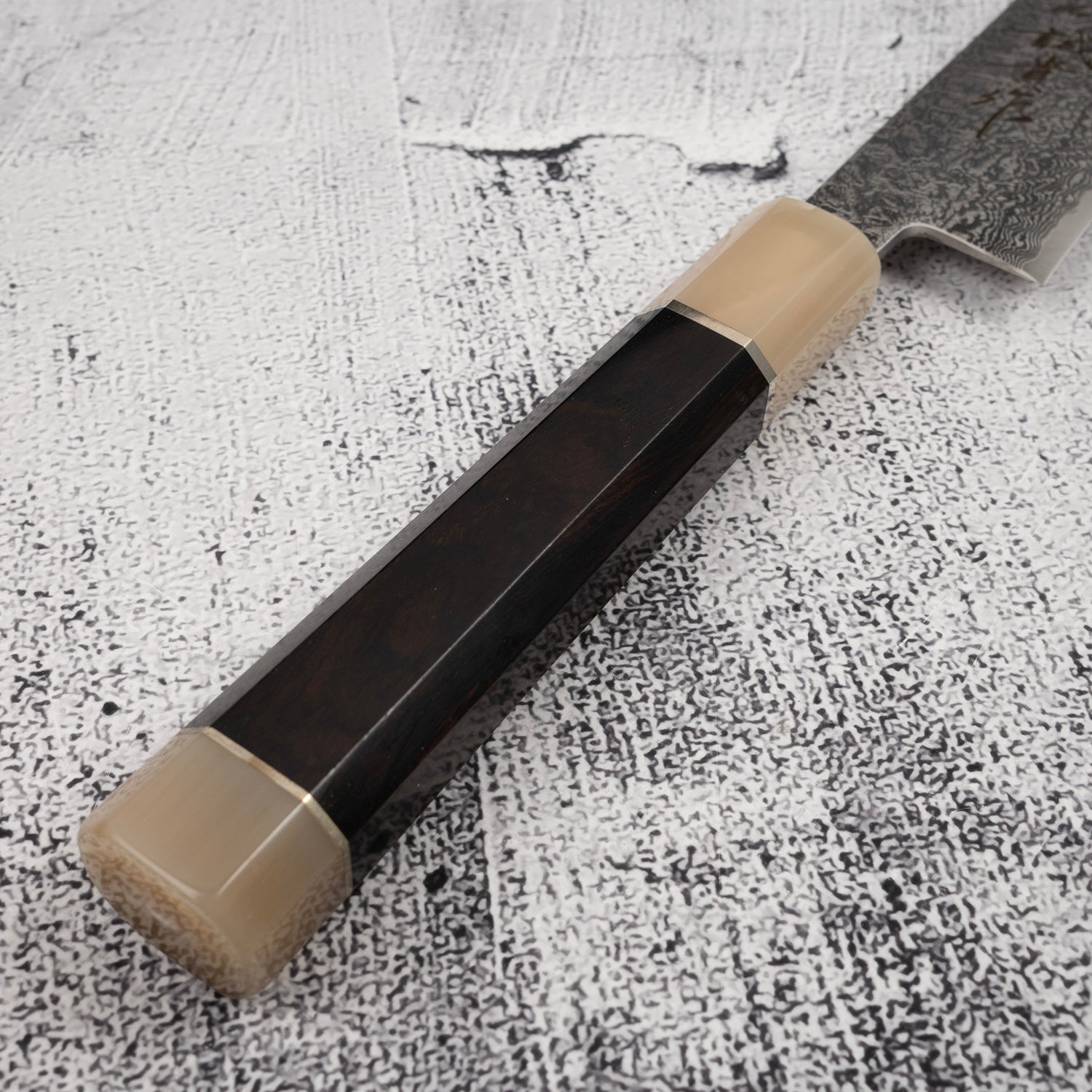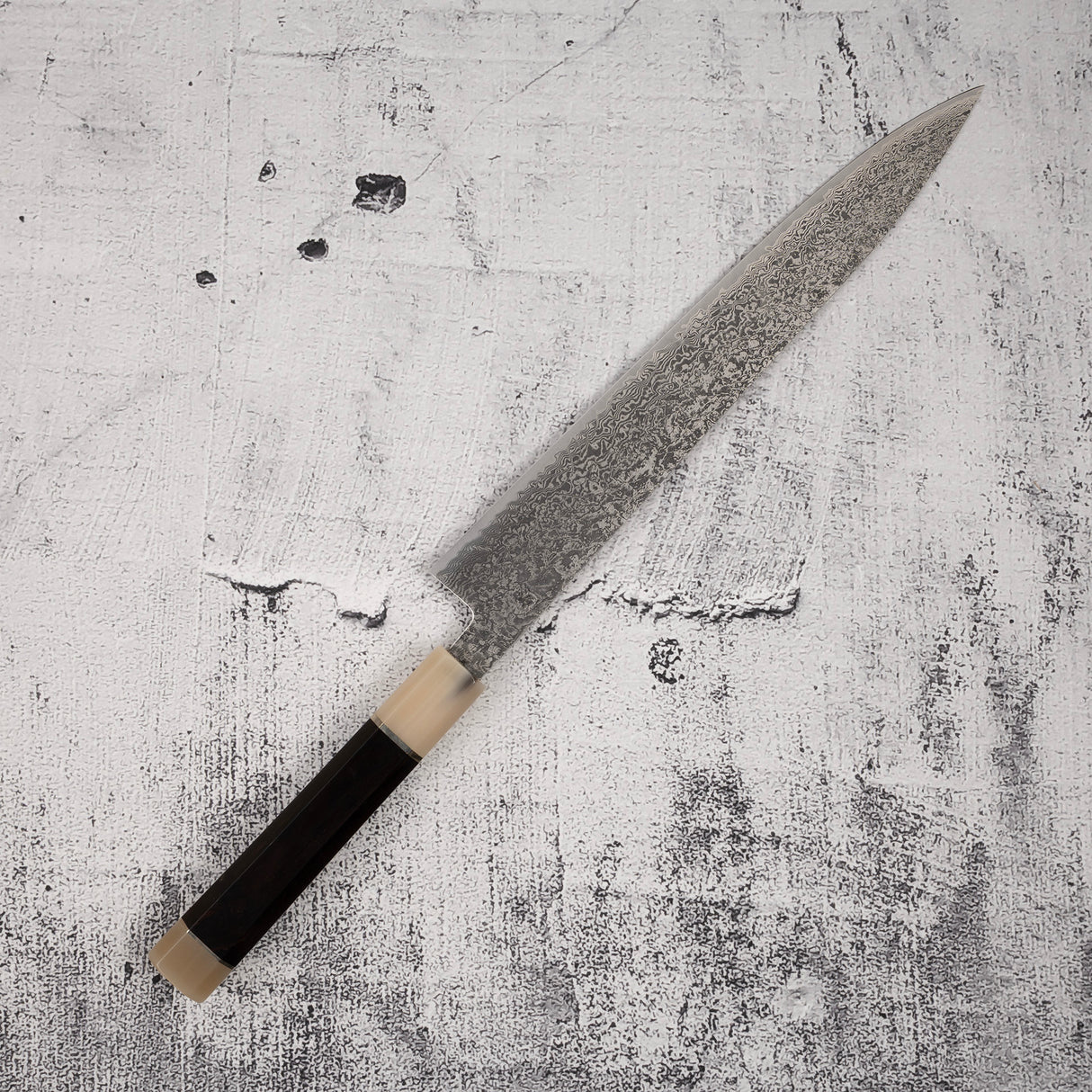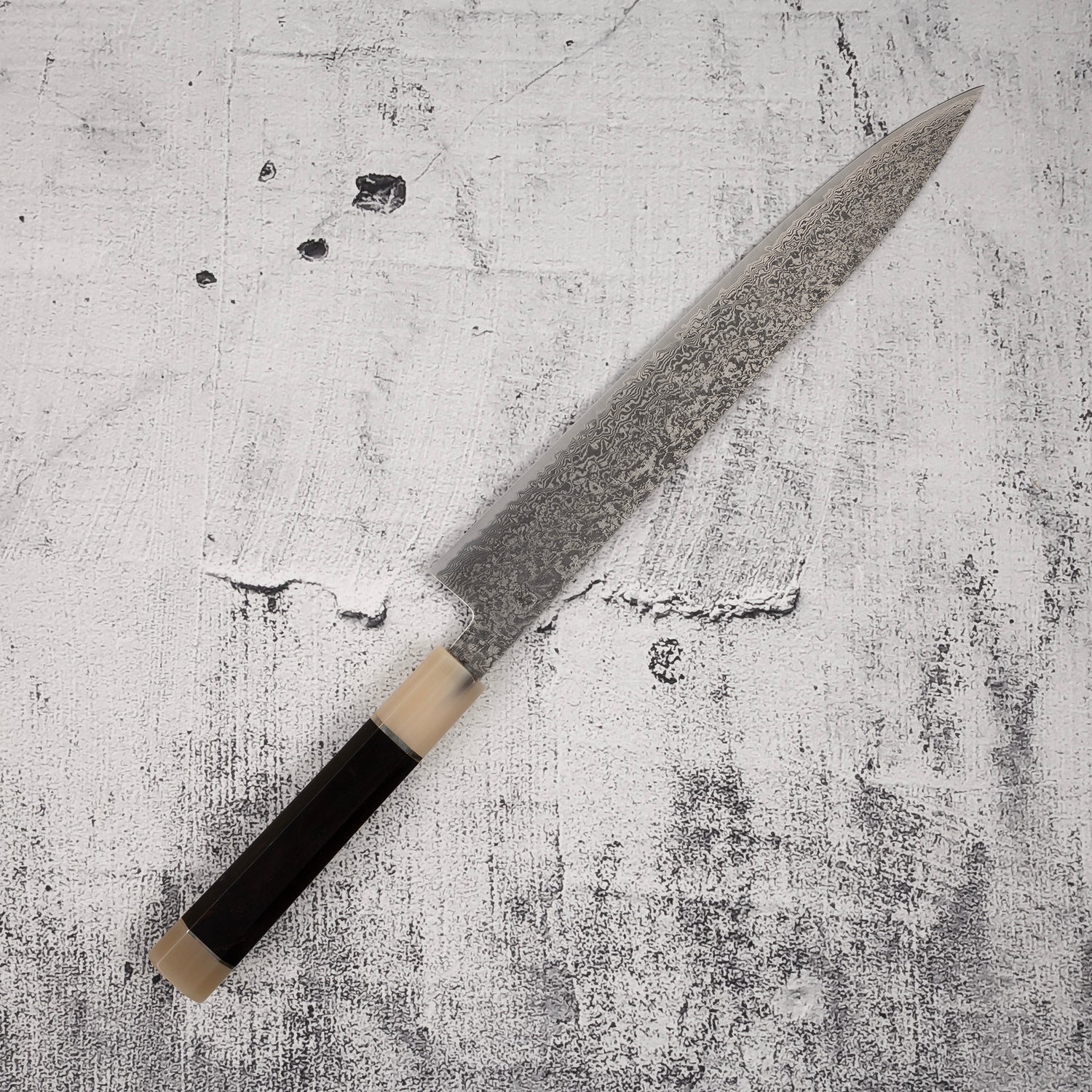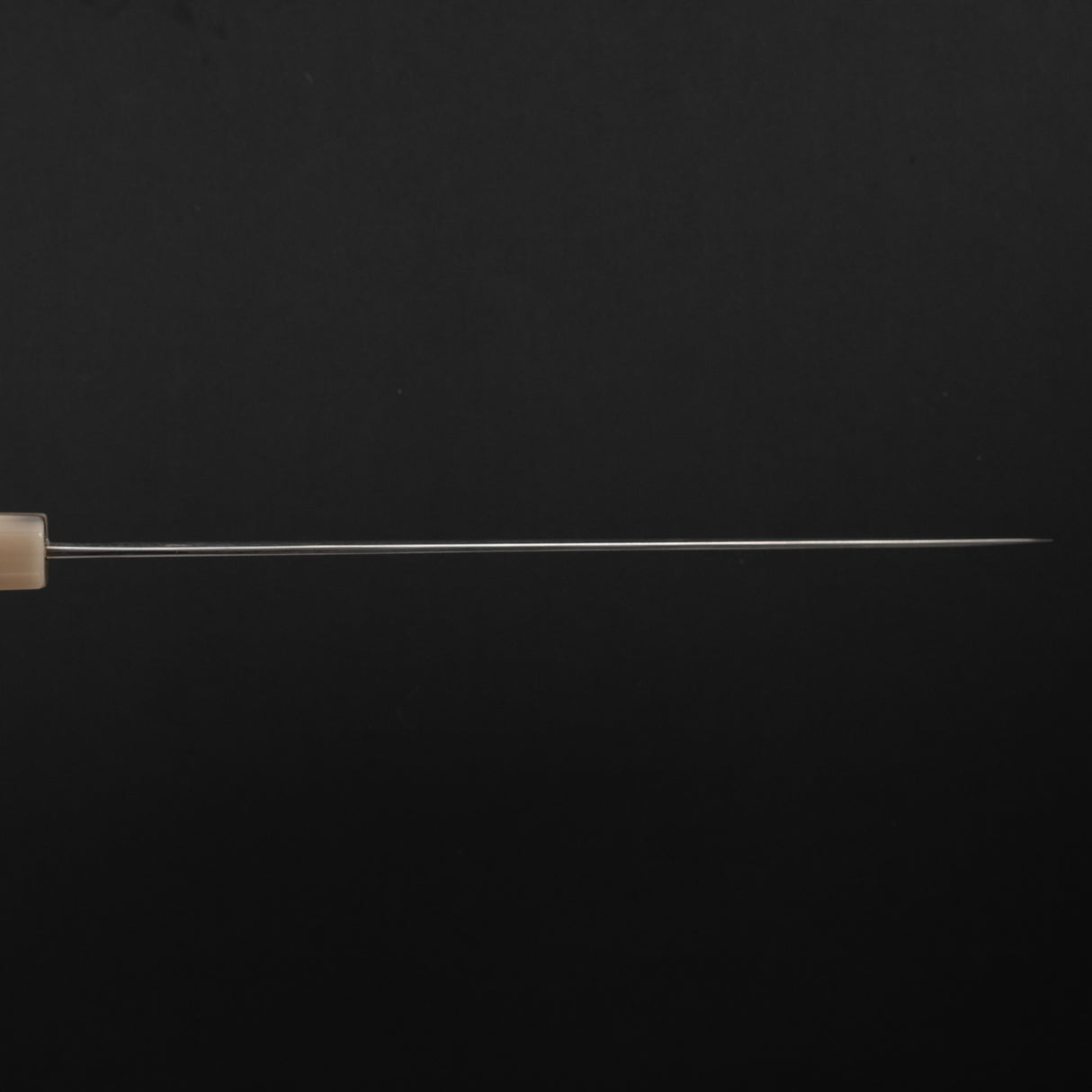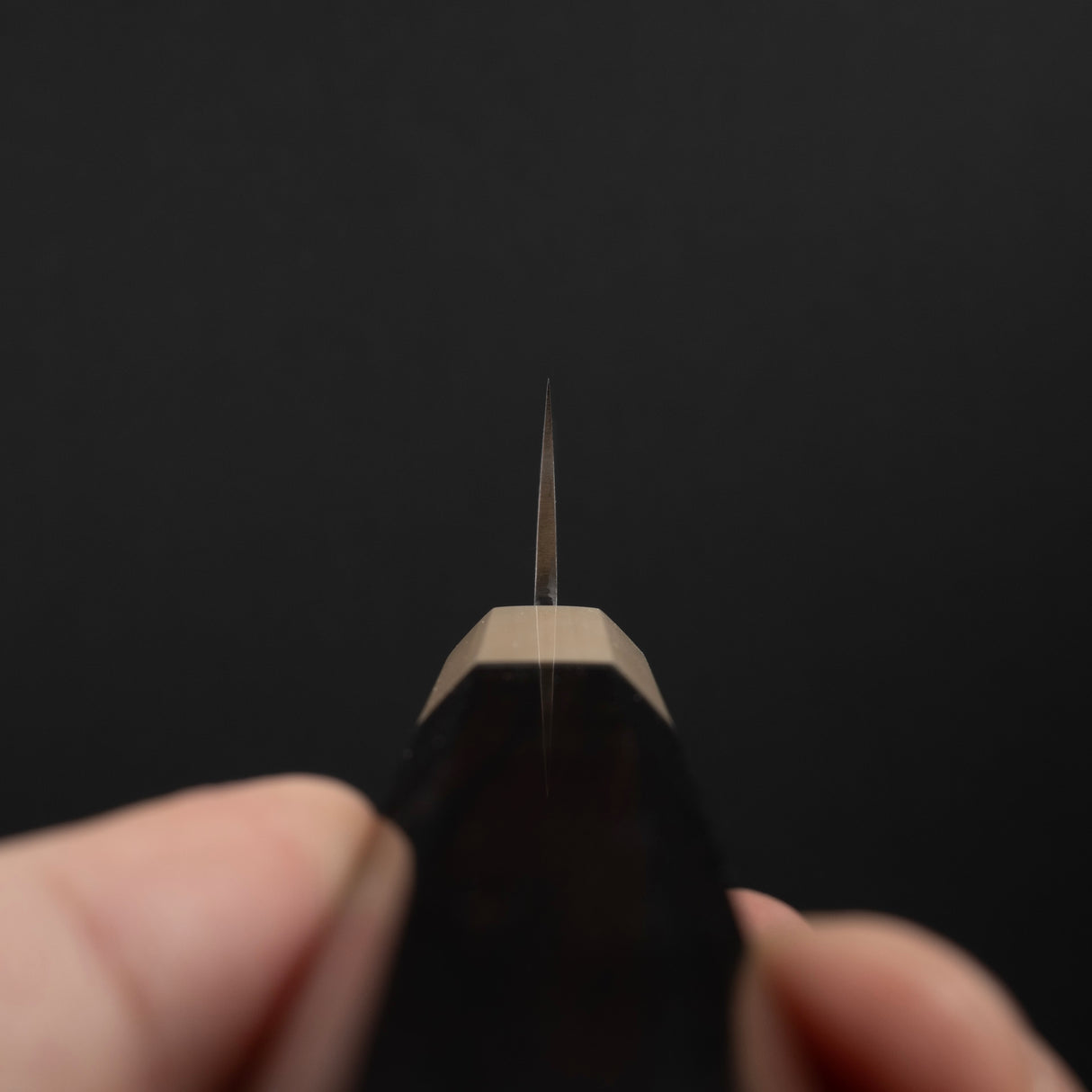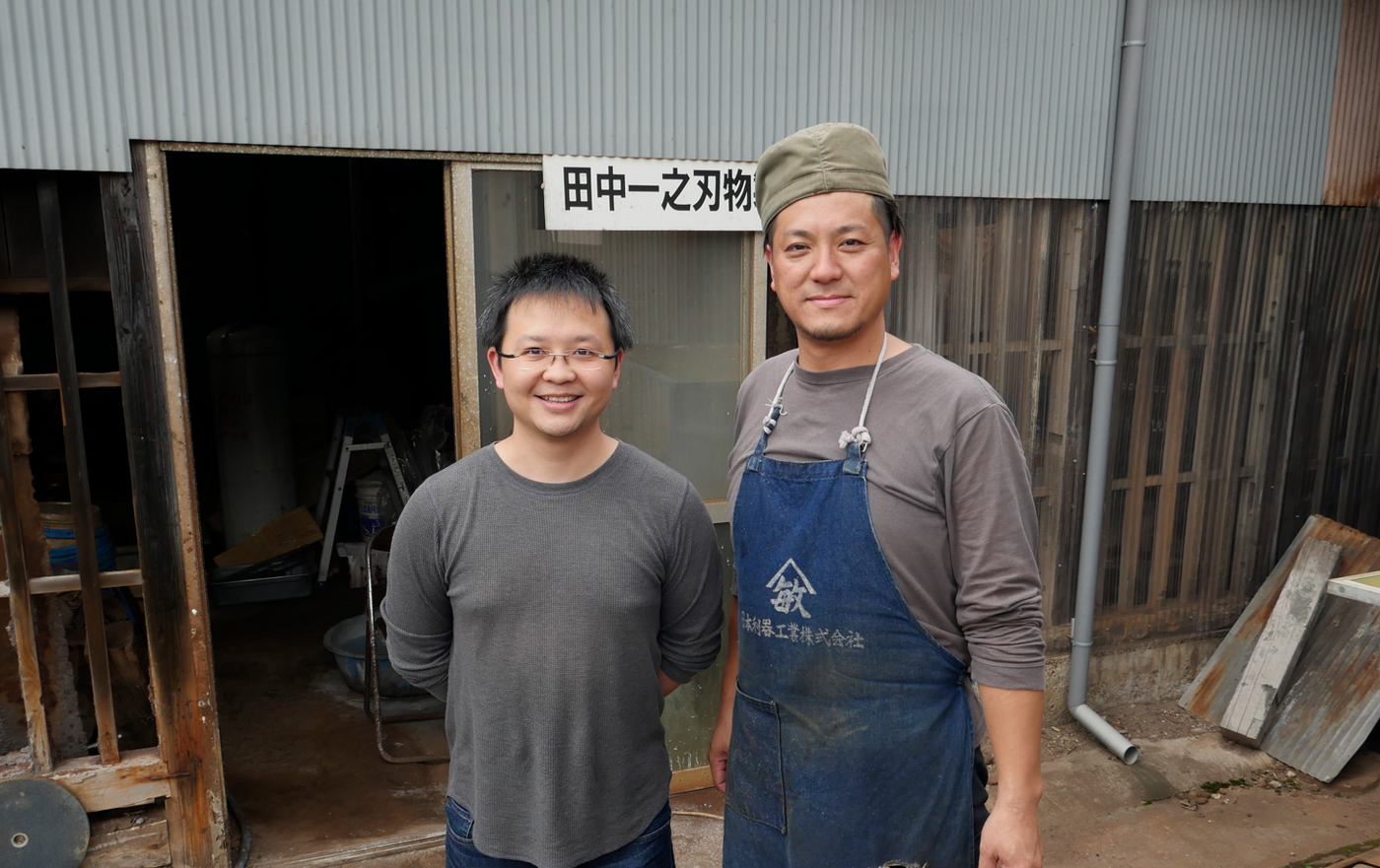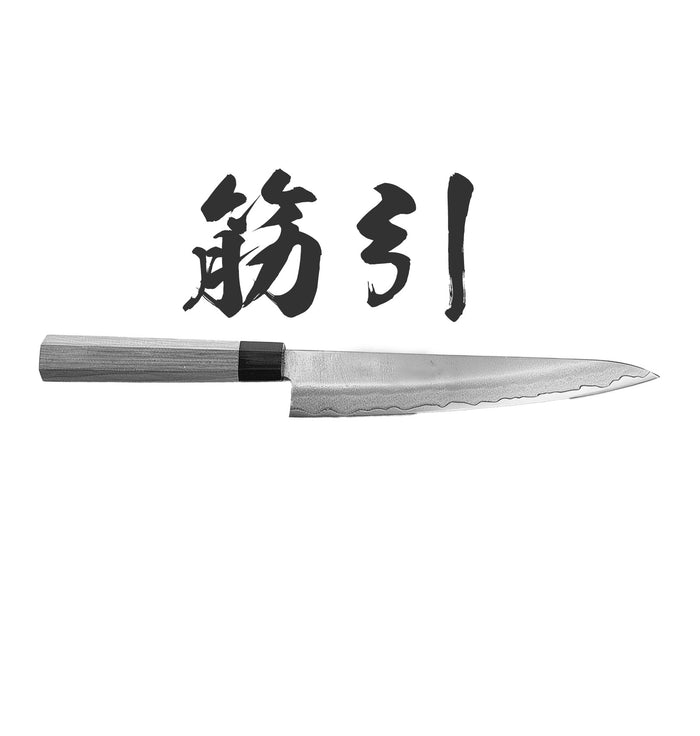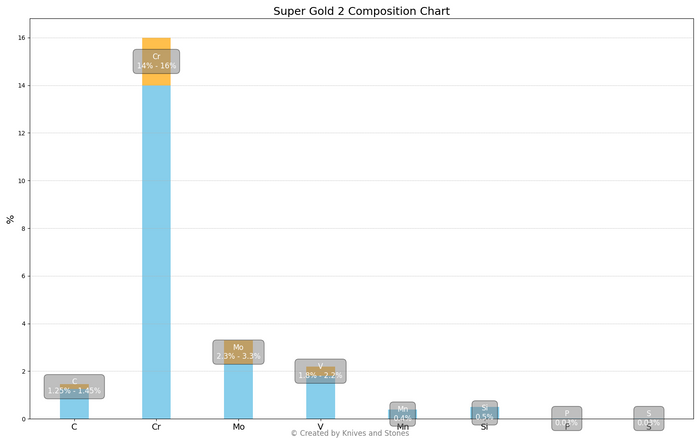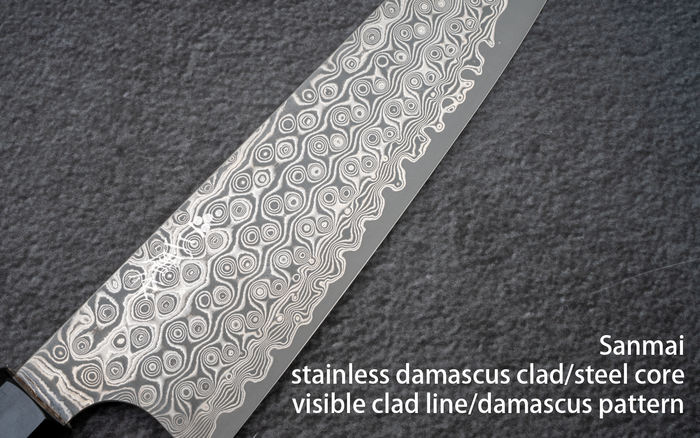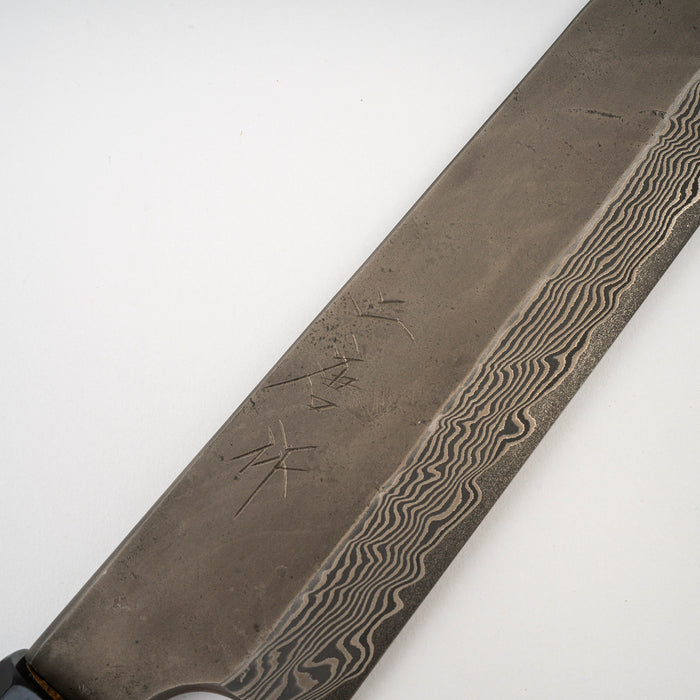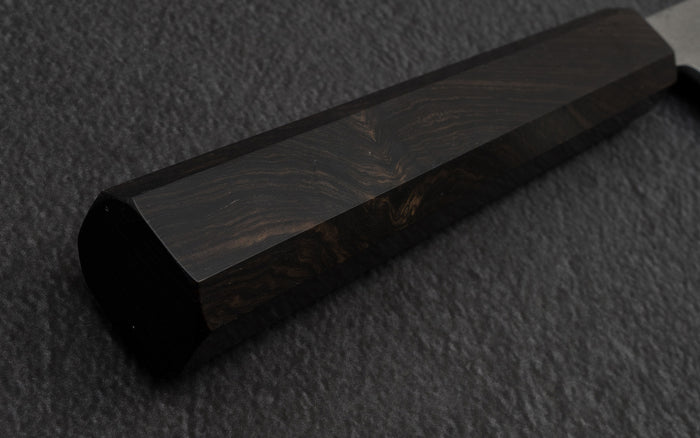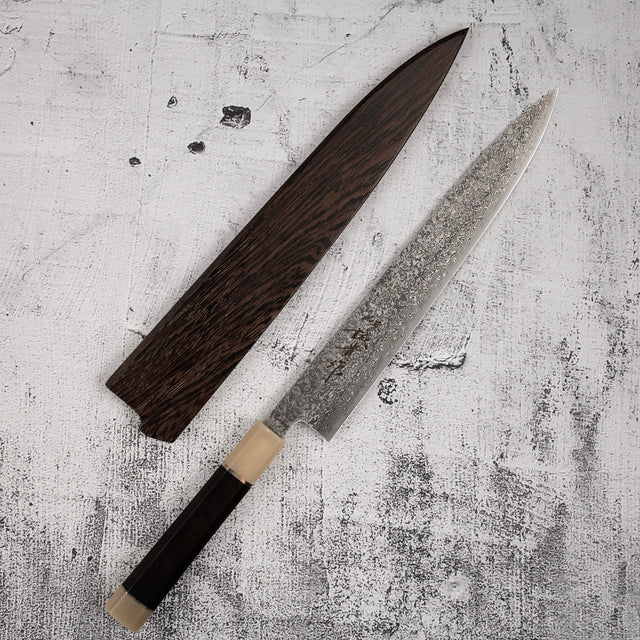Tanaka’s SG2 Kurozome Damascus is the top end product offered at Tanaka Kazuyuki Hamono. This excellent design combines high performance geometry, beautiful finish with Tanaka’s signature profile to create a highly functional yet good looking knife, and when it’s paired with the best handle in the industry crafted by Nishihara Sadao, it can easily be a top shelf item chased by collectors and enthusiasts.
Tanaka’s knives have always been known for their tall heels, and this line is no exception. Gyuto usually has heel height of at least 50mm, even 150mm petty can get a measurement of 33mm at the heel. The tall heel translates into a broad blade, it is more stable when pushing through denser produce and requires a smaller range of motion when doing rocking chopping, additionally, like a chinese cleaver, the wide blade is very good in picking chopped food up and transferring it to another container.
These SG2 are forged quite thin and finished in a gradual convex grind, a construction that is familiar to a lot of experienced knife nerds. Names like Shiro Kamo Takeshi Saji or Takamura would come across your mind when you pick up these knives, and it is not a surprise as Tanaka san did earn his skill in the Echizen region. This is a design that is well tested by time, based on a dazzling Damascus clad SG2 billet, an etching process turns layered steel into contrasting pattern, the additional friction created by this slightly rough finish is mitigated by an outstanding geometry, the convex in the blade is strong enough to push the sliced food off the surface and reduce friction but thin enough to cut into dense roots without excessive wedging. This knife is a good match with Kamo san’s Kurokumo or Takamura’s Uchigumo.
The handle is something worth mentioning too. In some occasions, these blades will be fitted with a synthetic handle or a WA handle, but at KnS, most of Tanaka’s SG2 comes with ironwood western style handles fitted with mosaic pins. These handles mould into your hands with excellent geometry and smooth finish, the master behind these handles Nishihara Sadao have been the top maker in this craft for many years. He is at a semi-retirement stage at an age over 80, so any of these handles made by him would be increasingly harder to acquire. These accumulated experiences speak for themselves, as soon as you put a bit of force into your hand, the handle will automatically slide and lock into a perfect spot for a pinch grip. Desert Ironwood as the premium material for knife handles has great stability without stabilization process, and once they are polished properly, the revealed texture and colour can rarely be matched by any other timbers.
Pretty knives like these usually don't come in a pretty price, and the Ironwood handle lineup we stock usually price at 4 digits, I think a petty that is close to a thousand AUD would make anyone take some considerations before making a final decision. Is it worth it? This is a question that I think you would need to ask yourself when thinking about these knives. Regardless of the price, this is still a line that has great functionality due to its choice of material, finish and sharpening.


